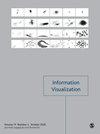法律和法律程序的可视化:错失良机
IF 1.8
4区 计算机科学
Q3 COMPUTER SCIENCE, SOFTWARE ENGINEERING
引用次数: 7
摘要
法律和法律程序的视觉表现可以帮助回忆和讨论复杂的法律概念,但这是一种在法学院很少教授的技能。本研究通过文献综述和基于概念的内容分析,调查了流程图和类似的面向过程的图表在当代法律文献中的使用。在文献中识别的信息可视化(infovis)被分为11种描述的原型图类型,结果按类型、年份、出版地点和法律领域定量地描述了它们的使用情况。我们发现,在法律文献中使用infois是极其罕见的,在每个日历年确定不超过10篇文章。我们还确定了概念流程图是最常用的,而统一建模语言(UML)是最常用的表示方法。这项工作为法律教育者和执业律师提出了一些严肃的问题,即法律教育和实践中的信息如何改善诉诸司法的机会、法律教育和对复杂法律框架和程序的理解。它的结论是,我们如何期望社区理解和遵守已经变得如此复杂和冗长的法律,甚至对许多学习法律的人来说都是不可理解的?本文章由计算机程序翻译,如有差异,请以英文原文为准。
Visualisation of law and legal Process: An opportunity missed
Visual representation of the law and legal process can aid in recall and discussion of complicated legal concepts, yet is a skill rarely taught in law schools. This work investigates the use of flowcharts and similar process-oriented diagrams in contemporary legal literature through a literature review and concept-based content analysis. Information visualisations (infovis) identified in the literature are classified into 11 described archetypal diagram types, and the results describe their usage quantitatively by type, year, publication venue and legal domain. We found that the use of infovis in legal literature is extremely rare, identifying not more than 10 articles in each calendar year. We also identified that the concept flow diagram is most commonly used, and that Unified Modelling Language (UML) is the most frequently applied representational approach. This work posits a number of serious questions for legal educators and practicing lawyers regarding how infovis in legal education and practice may improve access to justice, legal education and lay comprehension of complex legal frameworks and processes. It concludes by asking how we can expect communities to understand and adhere to laws that have become so complex and verbose as to be incomprehensible even to many of those who are learned in the law?
求助全文
通过发布文献求助,成功后即可免费获取论文全文。
去求助
来源期刊

Information Visualization
COMPUTER SCIENCE, SOFTWARE ENGINEERING-
CiteScore
5.40
自引率
0.00%
发文量
16
审稿时长
>12 weeks
期刊介绍:
Information Visualization is essential reading for researchers and practitioners of information visualization and is of interest to computer scientists and data analysts working on related specialisms. This journal is an international, peer-reviewed journal publishing articles on fundamental research and applications of information visualization. The journal acts as a dedicated forum for the theories, methodologies, techniques and evaluations of information visualization and its applications.
The journal is a core vehicle for developing a generic research agenda for the field by identifying and developing the unique and significant aspects of information visualization. Emphasis is placed on interdisciplinary material and on the close connection between theory and practice.
This journal is a member of the Committee on Publication Ethics (COPE).
 求助内容:
求助内容: 应助结果提醒方式:
应助结果提醒方式:


